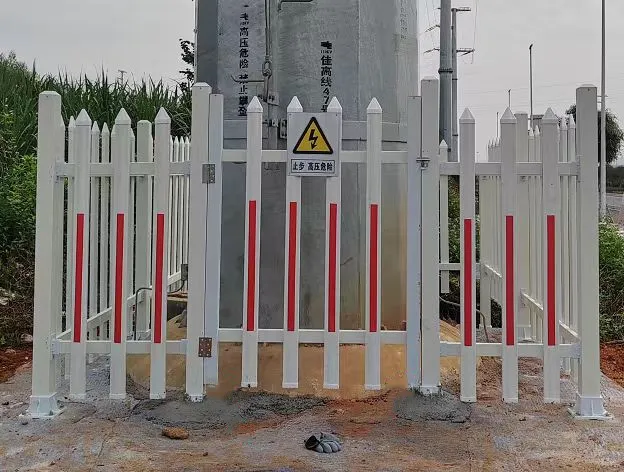loading...
- No. 9, Xingyuan South Street, Dongwaihuan Road, Zaoqiang County, Hengshui, Hebei, China
- admin@zjcomposites.com
- +86 15097380338
- Welcome to visit our website!
Effective UV Treatment Solutions for Purifying Water and Ensuring Safe Drinking Options
The Importance of UV Water Treatment A Comprehensive Overview
Water is one of our most vital resources, essential for life, health, and the environment. However, the growing concerns over water quality and availability have led to the exploration of various purification methods. One effective and increasingly popular approach is UV (Ultraviolet) water treatment, a technology that has revolutionized the way we ensure safe drinking water.
Understanding UV Water Treatment
Ultraviolet water treatment utilizes ultraviolet light to kill or inactivate harmful microorganisms in water. This process is a physical method of purification that doesn’t involve the addition of chemicals, making it an environmentally friendly option. The scientific principle behind UV treatment is quite straightforward. When water passes through a UV chamber, it is exposed to high-intensity UV light, particularly at a wavelength of around 254 nanometers. This specific wavelength is effective in disrupting the DNA of bacteria, viruses, and protozoa, preventing them from replicating, thus rendering them harmless.
Advantages of UV Water Treatment
One of the significant advantages of UV water treatment is its effectiveness. Traditional methods, such as chlorination, can take time to disinfect water, while UV treatment works almost instantaneously. It can eliminate a broad spectrum of pathogens, including those resistant to chlorine, such as Giardia and cryptosporidium. Moreover, UV treatment does not change the taste, odor, or appearance of the water, which is a common drawback of chemical treatments.
Another notable benefit is the environmental friendliness of the UV treatment method. Since it does not involve harmful chemicals, there are no byproducts produced that can create additional pollution. Additionally, UV systems are typically energy-efficient, especially when compared to some thermal disinfection processes.
Applications of UV Water Treatment
uv water treatment

UV water treatment has a variety of applications across different sectors. In municipal water treatment plants, it is often used as a final barrier to ensure that drinking water is free of pathogens before it is distributed to consumers. Many homes are also adopting UV water purifiers as a part of their point-of-use systems, providing an extra layer of protection for drinking and cooking water.
Aside from drinking water, UV treatment is beneficial in swimming pool sanitation, aquaculture, and wastewater treatment. In these applications, UV systems help reduce the microbial load, ensuring that water is safe for recreational or ecological purposes.
Limitations and Considerations
While UV water treatment offers numerous benefits, it is not without limitations. One significant drawback is that UV light only disinfects; it does not remove chemicals, heavy metals, or particulate matter from the water. Therefore, it is essential to ensure that the water is pre-filtered to remove larger particles that could block the UV light and reduce its effectiveness.
Moreover, the effectiveness of UV treatment is contingent on proper maintenance and the condition of the UV lamps. Regular monitoring and replacement of lamps are critical to ensure that they function at optimum efficiency. Additionally, cloudy or colored water can hinder UV penetration, which might necessitate the use of advanced systems that combine UV treatment with other purification technologies.
Conclusion
As the world grapples with water scarcity and contamination, the importance of effective water treatment methods cannot be overstated. UV water treatment has proven to be a reliable, efficient, and environmentally friendly technology that addresses many of the challenges posed by traditional disinfection methods. Its rapid action against a wide range of pathogens makes it an excellent choice for ensuring safe drinking water.
By understanding the principles, advantages, and limitations of UV water treatment, consumers and industries can make informed decisions about their water purification needs. As technology continues to evolve, integrating UV treatment with other filtration systems may pave the way for even more efficient water purification solutions, ultimately contributing to healthier communities and a sustainable environment.
-
The Rise of FRP Profiles: Strong, Lightweight, and Built to LastNewsJul.14,2025
-
SMC Panel Tanks: A Modern Water Storage Solution for All EnvironmentsNewsJul.14,2025
-
GRP Grating: A Modern Solution for Safe and Durable Access SystemsNewsJul.14,2025
-
Galvanized Steel Water Tanks: Durable, Reliable, and Ready for UseNewsJul.14,2025
-
FRP Mini Mesh Grating: The Safer, Smarter Flooring SolutionNewsJul.14,2025
-
Exploring FRP Vessels: Durable Solutions for Modern Fluid HandlingNewsJul.14,2025
-
GRP Structures: The Future of Lightweight, High-Performance EngineeringNewsJun.20,2025
